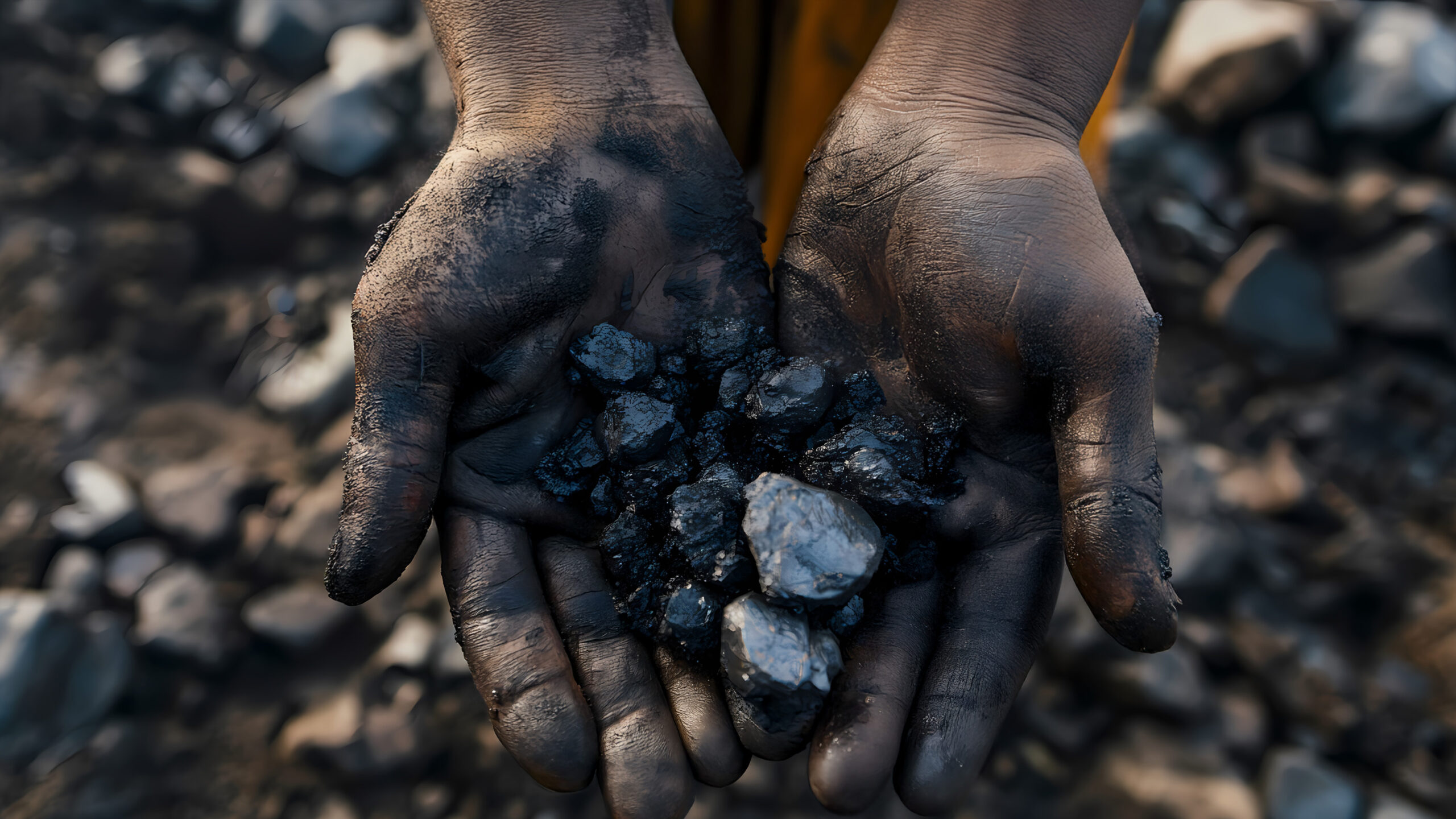From the moment we wake up until our heads hit the pillow at night, we rely on technology. We check our phones, drive our cars, work on our laptops, and use electricity to power them all, but rarely do we consider what makes this all possible. Behind all of this technology is a group of 17 metals, referred to as rare earth elements (REEs) which comprise the invisible backbone of modern technology. These metals make smartphones, computer hard drives, electric vehicles, MRIs, LEDs, wind turbines, and solar panels possible. They can also be used to mitigate environmental pollutants in the air and water and are also important to the fields of agriculture and biomedicine.1 Without these minerals, there is no advanced computing, no servers, no data centres, no global internet. They are the raw materials that make our digital world possible.
Despite their importance, the mining and processing of REEs are driving severe human rights abuses, environmental destruction, and geopolitical tensions. Rare earth elements are so named, not due to their scarcity, but because of the difficulty of extracting them. Although they are found in more than 30 countries, they often exist in low concentrations or combined with other minerals.2 The mining and processing of these minerals require large amounts of energy, water, and dangerous chemicals and result in radioactive by-products and environmental destruction.3
Their central role in today’s security, communication, and computing technologies has turned REEs into a driver of geopolitical competition and conflict. Already REE extraction is replicating colonial patterns of resource exploitation where powerful countries reap the benefits of another country’s resources, leaving conflict and devastation in their wake. Just as the Spanish extracted gold from its colonies in the Americas, now China, Australia, and the US are extracting REEs from countries like Myanmar and the Democratic Republic of the Congo (DRC) (Walter et al., 2023). These resources often exist in regions vulnerable to exploitation with histories of conflict, unstable governments, and few safety and environmental regulations. This global scramble for minerals is fueling armed conflict, displacing communities, and perpetuating violence.
Our digital world runs on rare earth elements – from the magnets in data centres to the colours on our screens – yet we rarely talk about the hidden costs behind them. This article examines how the global race for rare earth elements replicates colonial extraction patterns, fuels armed conflict in vulnerable regions, and causes severe environmental destruction. It argues that without accountability and sustainable practices, the renewable energy transition risks exacerbating the very problem it seeks to solve.
Colonial Extraction Patterns
For centuries under colonialism, wealthier and more powerful countries have reaped the benefits from extracting weaker countries’ resources while leaving problems in their wake; the extraction of REEs is a continuation of this pattern. Currently, companies in China, Australia, the US, and Canada control global REE mining and processing, with one Chinese company controlling 70% of the industry (Walter et al., 2023). However, because of the health and environmental hazards associated with mining and processing REEs, the safety and environmental regulations in these countries make it very expensive to extract these resources (Fan et al., 2023).
The single REE mine in the US was closed for decades for this reason and only recently reopened (Walter et al., 2023). Even China, which historically profited from its low production costs because of lack of regulation and low wages, now faces tighter controls.4 As a result, these mining companies have moved to countries in the Global South to bypass these regulations and to take advantage of conflicts and unstable governments (Fan et al., 2023; Meehan et al., 2025; Zhiyenbayev, 2025).5
Many of the world’s deposits of REEs exist in unstable, conflict-prone areas with vulnerable populations, and the competition for control of the mineral wealth exploits and exacerbates these tensions. The Democratic Republic of the Congo provides the majority of the world’s cobalt and many other REEs.6 However, war has plagued the DRC for decades, and the competition for the country’s REEs has heightened this conflict.7 Armed militias control the majority of the country’s mineral assets and have displaced numerous people while perpetrating human rights abuses including rape, enslavement, and child labor.8
Similarly, in the Amazon Basin between Colombia and Venezuela, armed militias have seized control of the areas with rich REE deposits, displacing the Indigenous people who previously mined there.9 The guerilla groups threaten anyone that tries to push back, sometimes imprisoning or even executing them. In some cases, they run sex trafficking operations in the mining areas.10
In Myanmar, armed groups have used REE mining as an opportunity to strengthen control over regions that have a history of conflict, often using extreme violence (Zhiyenbayev, 2025). The mining has served to strengthen militarized rule and has discouraged political dissent and formation of civil society groups (Walter et al., 2023). The militarized groups act as de facto police and have led to corruption and promote drug use and gambling in mining areas (Meehan et al., 2025). Finally, REE reserves contributed to Russia’s invasion of Ukraine. The US then tried to take advantage of the conflict to gain access to Ukraine’s minerals in exchange for military aid.11
Environmental Devastation
In addition to these conflicts, REE mining and processing devastate the environment, especially because mining companies seek to build their facilities in countries with few regulations. Some of the effects include deforestation, landslides, water pollution, radioactive waste, and biodiversity loss.12 In-situ leaching, touted as a less destructive method to obtain REEs, contaminates the soil and water. After miners inject leaching agents into the soil, the toxic chemicals leach into the groundwater. Sometimes companies dump their waste water back into lakes and rivers without treatment (Meehan et al., 2025). Open pit mining and In-situ leaching also lead to deforestation because before injecting chemical agents into the soil, companies remove vegetation (Han et al., 2025). Companies also cut trees to use to burn sediment to access the REEs. (Meehan et al., 2025).
China is a prime example of REE mining’s environmental devastation. Decades of mining and processing in China with few environmental protections has left significant environmental damage (Walter et al., 2023). Mining has left regions polluted and eroded and damaged vegetation, often resulting in reduced or non-existent crop yields (Situation and Policies of China’s Rare Earth Industry, 2012). In response, the government enacted environmental regulations, making mining less profitable, and prompting companies to relocate to countries without regulations (Meehan et al., 2025).
Conclusion
As the world transitions from fossil fuels to renewable energy, we cannot allow mining companies to repeat exploitative methods of resource extraction. We must hold them accountable for the human rights violations and the environmental consequences of REE mining. National laws are insufficient. As we have seen, these measures only succeed in driving companies to operate in countries with less oversight. Hence, international regulations are necessary to ensure that mining companies abide by health and safety standards, pay resource owners fairly, and mine and process REEs sustainably. International regulations are also needed to ensure that corporations only purchase ethically sourced REEs. While a number of major companies like Apple, Alphabet, Tesla, and Microsoft have committed to only using ethically sourced materials, several were accused of using minerals obtained using child labor.13 Clearly more oversight is needed.
Harvesting and reusing REEs from discarded technology is a potential solution but presents its own challenges. Because REEs are only used in very small quantities for electronic devices, the cost of harvesting them from waste keeps recycling from being economically viable.14 Currently, less than 1% are being recycled.15 However, it is possible that support for research in this area could develop more efficient recycling methods. At the very least, requiring better disposal of electronic devices would keep dangerous materials from leaching into the soil and groundwater in landfills.
As consumers of products containing REEs, we must not ignore the impacts of REE mining even if they do not affect us directly. As we fight global warming, in the end there are no winners or losers – we all will suffer. Displacing emissions and deforestation will eventually affect us all. One simple way to help is to use our electronic devices for longer. The longer we use our devices, the fewer of them that must be produced, and therefore the fewer REEs that must be mined to produce new devices. Another option is to support groups like Conflict Free Technology and the Enough Project which promote ethically sourced minerals. Also consider purchasing your next smartphone from Fairphone, a Dutch company committed to producing sustainable and ethically sourced e-devices. So before succumbing to the allure of the newest iPhone, reconsider, and when you do upgrade, make sure to responsibly recycle your old device.
References
- Han, Y.-H., Cui, X.-W., Zhang, Y., Zhang, H., & Chen, Z. (2025). Environmental impacts of rare earth elements mining and strategies for sustainable management: A comprehensive review. Journal of Hazardous Materials, 140400. https://doi.org/10.1016/j.jhazmat.2025.140400
- Walter, M., Custodio, C., Andriamanantenasoa, V., & Feffer, J. (2023, November 28). Mapping the Impacts and Conflicts of Rare-Earth Elements: A new map and report explore the challenges for a green and digital transition. Foreign Policy in Focus. https://fpif.org/mapping-the-impacts-and-conflicts-of-rare-earth-elements/
- Fan, J. H., Omura, A., & Roca, E. (2023). Geopolitics and rare earth metals. European Journal of Political Economy, 78, 102356. https://doi.org/10.1016/j.ejpoleco.2022.102356
- Meehan, P., Sadan, M., & Lawn, D. S. (2025). The Myanmar borderlands as a green energy transition ‘sacrifice zone’: A case study of rare earth mining in Kachin state. The Extractive Industries and Society, 22, 101579. https://doi.org/10.1016/j.exis.2024.101579
- Zhiyenbayev, M. (2025). Securing the New Resource Frontier: Critical Minerals in an Era of Great-Power Rivalry (No. Issue 43; Strategic Security Analyses). Geneva Centre for Security Policy. https://www.gcsp.ch/sites/default/files/2025-09/SSA-2025_43_Zhiyenbayev_Securing%20the%20New%20Resource%20Frontier%3Bdigital.pdf
- Bahini, Y., Mushtaq, R., & Bahoo, S. (2024). Global energy transition: The vital role of cobalt in renewable energy. Journal of Cleaner Production, 470, 143306. https://doi.org/10.1016/j.jclepro.2024.143306
- Boluda, I. M., Patitsas, E., & McMahan, P. (2021). What do Computer Scientists Know About Conflict Minerals? LIMITS Workshop on Computing within Limits. https://doi.org/10.21428/bf6fb269.64063bd7
- Kohnert, D. (2024). Prospects and Challenges for the Export of Rare Earths From Sub-saharan Africa to the EU. SSRN Electronic Journal. https://doi.org/10.2139/ssrn.4687731
- Diaz, D. Q. (2024, March 18). Why Colombia’s First Rare Earths Mining Project Has Gotten So Toxic [Worldcrunch]. https://worldcrunch.com/green/rare-earth-mining-colombia/
- Ebus, B. (2025, November 7). ‘Drug trafficking, extortion, kidnapping’: The lawless rush for rare earth minerals in Venezuela. The Guardian. https://www.theguardian.com/global-development/2025/nov/07/drug-trafficking-extortion-kidnapping-the-lawless-rush-for-rare-earth-minerals-in-venezuela
- Baranowski, M., Jabkowski, P., & Kammen, D. M. (2025). From the Russian invasion of Ukraine to the battlefield of the future: The geopolitical fight for Ukraine’s mineral wealth. Energy Research & Social Science, 123, 104043. https://doi.org/10.1016/j.erss.2025.104043
- The State Council of the People’s Republic of China. (2015). Situation and Policies of China’s Rare Earth Industry. Gov.cn. https://english.www.gov.cn/archive/white_paper/2014/08/23/content_281474983043156.htm
- Veer, P. (2025, May 26). Blood Batteries: How Congo’s Conflict Is Shaking the World’s Rare Earths Market. Observer Research Foundation. https://www.orfonline.org/expert-speak/blood-batteries-how-congo-s-conflict-is-shaking-the-world-s-rare-earths-market
- Baldé, C. P., Kuehr, R., Yamamoto, T., McDonaled, R., D’Angelo, E., Althaf, S., Bel, G., Deubzer, O., Fernandez-Cubillo, E., Forti, V., Gray, V., Herat, S., Honda, S., Iattoni, G., Khetriwal, D. S., di Cortemiglia, V. L., Lobuntsova, Y., Nnorom, I., Pralat, N., & Wagner, M. (2024). The Global E-Waste Monitor 2024. United Nations Institute for Training and Research, International Telecommunication Union.
- Golroudbary, S. R., Makarava, I., Kraslawski, A., & Repo, E. (2022). Global environmental cost of using rare earth elements in green energy technologies. Science of The Total Environment, 832, 155022. https://doi.org/10.1016/j.scitotenv.2022.155022






